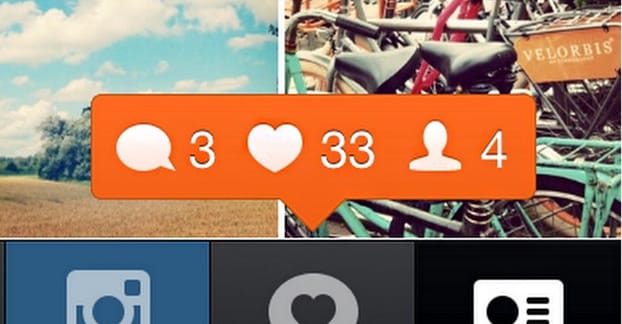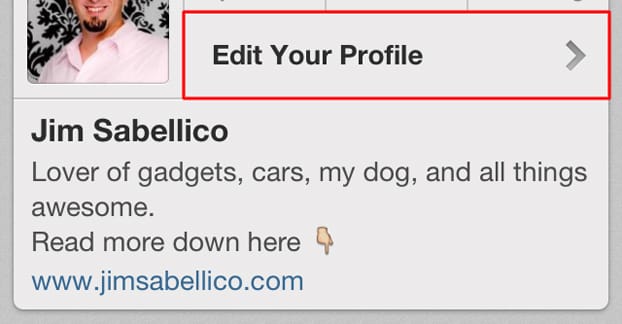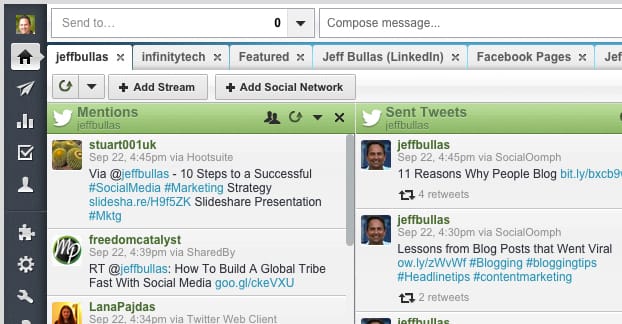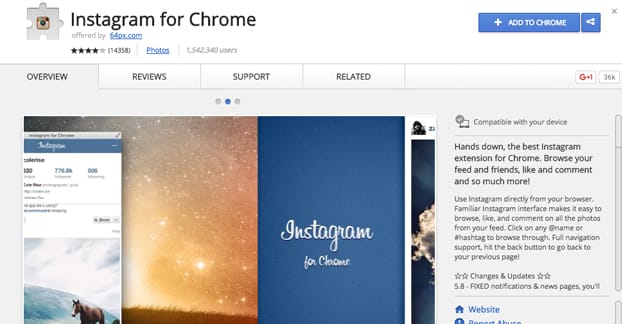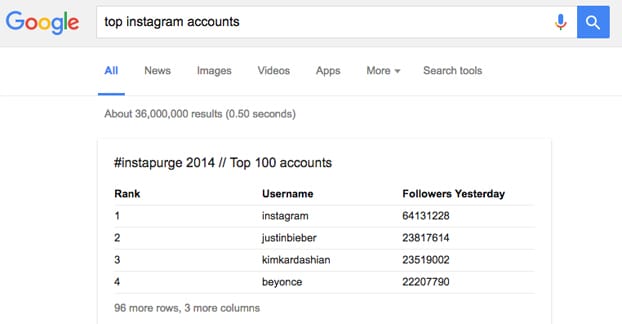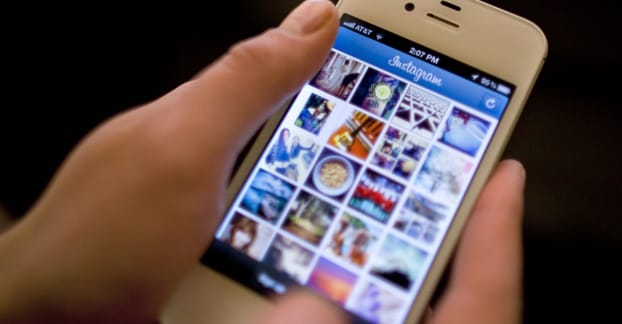Gaining an Instagram audience is very much like the mythical journey of a thousand miles; it’s just one step after the next. Nothing you do – well, nothing short of being struck by the lightning of a viral surge – will gain you more than a small handful of followers at a time. The trick is getting that incremental growth time and again, over and over, until your audience is large enough to reach your target goals.
What I’ve done is put together a list of assorted tips from all over the spectrum, tips you can use to take those steps. Some are one-time optimizations, some are ongoing processes, and some are just ideas to be aware of if the opportunity presents itself.
Together, a selection of them can form the basis of a good social media strategy for you.
1. Fill out your profile as completely as possible.
Your profile consists of three major parts. These are your profile picture, your description, and your link. Your profile picture should be an accurate representation of you. If you’re a brand, it should probably be your logo, though it can be an artistic or thematic version of your logo.
Your description is short – generally around the length of a tweet – and needs to be optimized. Don’t try to include your link in your bio, that goes in its own field. You can include a keyword or two in here, but make it natural. “We specialize in SEO” works in SEO just fine. “We’re marketing, SEO, advertising pros” looks like you’re shoving in additional keywords.
Your link is simple. Just include a link to your website. You don’t even need to use a landing page; people are clicking it because they want to see your site, not a page tailored to them. That said, the majority of the activity on Instagram comes from mobile, so you should make sure your site works with mobile. I mean really works, none of this vaguely responsive not quite usable stuff. Mobile users are pickier than ever now that most sites are at minimum responsive.
Finally, your cover photo is not actually a cover photo. Instagram pieces it together as a collage dynamically, made up of your seven most popular images. This means two things; first, it means you need to have a lot of high quality images. Second, it means if you want your cover photo to look good, you need to have at least seven images uploaded before you start promoting your profile.
Instagram connects with both Facebook and Twitter for a more robust, all-inclusive experience. Now, I don’t recommend setting up auto-posting between them. Instead, I recommend using a social manager of your choice to manage the streams. When you schedule a post on one site, schedule that post on another site, adapted for the platform.
For example, Instagram allows lengthier descriptions with their images, that include quite a number of hashtags and, if you want, actual tags. Twitter should only have one or two hashtags and no mentions, and Facebook – which can have a longer description as well – shouldn’t have either. You can occasionally invite people to tag themselves, but it’s often seen as at least a little rude for a business to tag people without their previous consent.
3. Leave comments on pictures you like or that feature your brand in some way.
Commenting is the most important common form of engagement you can express on Instagram. Likes are cheap and most people don’t care. They see a new like, they appreciate it, but they don’t necessarily check to see who it’s from or if it’s valuable. A comment, though, they read because they’re a lot rarer.
Ideally, you will use a desktop application – or a Bluetooth keyboard for your phone – to type your comment. This helps you comment faster, and helps you avoid autocorrect errors, which can be annoying when you’re presenting a professional brand.
Now, how do you find the pictures you should like? I recommend first searching relevant hashtags and keywords in Instagram itself. This will show you a selection of pictures. Pick maybe a dozen of them, and make sure they follow certain criteria.
- They were posted recently, as in the last week. Ideally, they will have been posted within the last 48 hours.
- The image is relevant to your industry or, if possible, your brand.
- The image has fewer than five other comments, ten at the most.
The first guideline is to make sure you’re not committing internet necromancy on posts, which looks like you’re fishing. The second ensures that you don’t look like a spammer. The third guarantees that your comment is stand-out important rather than just one of a crush.
4. Find and engage with influential users.
Instagram has a unique set of influencers, because it’s harder to use and access than other social networks. This means that you’ll be surprised at the names that show up, because they’re not often found on other networks. Instagram is its own culture, and you’ll have to find influencers in its own way.
When you find influencers in your niche, you’ll want to engage with them as naturally as possible. Start liking and commenting on their recent pics, but don’t go overboard with it. Don’t dig into their past to like pics, and don’t excessively comment on every photo. Pick and choose the images you engage with, but keep it part of an ongoing attempt to be socially relevant to them.
Your goal is to get them to check out your profile and, ideally, engage with you as well. This helps draw the attention of their audience which, since they’re influencers, will be substantial.
Another use for influencers will be important for other aspects of your Instagram marketing. Take a look at the content they post, and pay particular attention to the hashtags they use. The hashtags used by your industry influencers will be tags you’ll want to use or adapt for your own use. Just make sure you’re not trying to co-opt their branded tags or the tags they’re using for ad campaigns. Just note down the generic tags they’re using.
5. Start a campaign of likes.
Neil Patel tried out a bunch of different growth methods for Instagram, and the most reliable one he found was just like a few hundred to a couple of thousand images per day. That’s a LOT of likes, though, and it can kind of look like spam.
At the time – in 2012 – Neil had a 22% return rate of likes for his own likes, and a 6% proportional follower gain. What I mean is that for every 100 likes, he got 22 likes back and 6 followers. This is flexible, of course, but that became his main growth strategy. He liked photos in bulk and got bulk followers back.
My concern with this is that it doesn’t work as well as it used to. I haven’t seen more recent statistics about it, so if anyone can point me in the right direction, I’d be happy to take a look.
6. Post consistently every day.
Instagram is an interesting platform in that studies generally showed that the ideal minimum number of posts per day is about two, but that there wasn’t a traffic or engagement drop-off for posting more often like there is on other sites.
What this means is that you can post as many times per day as you can sustain. That sustain is the important part here. If you can post six times in one day, great, but only do that if you can post six time every day. If you can’t, dial back to three or four times per day, or even just twice each day. How often you post is up to you, but try to post at least twice per day.
As for the images you post, you have a ton of variety. Pictures of happy people, pictures of your products in use or in artistic settings, pictures of your geographic area, pictures that look artistic with warm temp filters, pictures of your employees at work; it’s all there and available. The pictures you choose will depend primarily on what sort of culture you want to reach and portray as a business. A company like Old Spice will post crazy over the top masculine imagery. A company like Red Bull posts adventure lifestyle pictures, because that’s the kind of atmosphere they’re portraying. A surfboard company wouldn’t post pictures of mountains or deserts or enclosed cities, right?
There are a lot of different ways you can encourage engagement on the site. You can, for example, ask your users to tag a friend. This will get people to tag other people in a chain a few degrees out, and if those friends are interested in your content, they might even follow you. You can add some emojis into some of your descriptions, to reach some of the more casual browsers.
One great technique is to hold Instagram contests. Contests in general, on any social media site, should be branded. They should offer something as a prize that is unique, either to your brand or to Instagram. If your brand is sufficient size, for example, you can offer featuring an image on your page as a reward. Otherwise, you can offer store discounts, gift cards, or products/samples as rewards.
What sort of contests can you run? Instagram is a mobile-focused platform, so you shouldn’t ask for anything that’s too desktop focused. The obvious answer is a photo submission contest, which is great. You can also run caption contests, posting strange images of your own and asking for the best/funniest/most surreal caption. You can host referral-based contests to get new people to follow you. If you have a really good prize, you can even ask for showcase Instagram videos as submissions. The bar is higher for a well produced video, so the prize should be more valuable.
8. Don’t forget to cross-promote.
One of the first things you did was link your other social networks to your Instagram account. One thing you have to remember to do is cross-promote between them. Now, don’t just set up automatic sharing, particularly if you’re posting 3+ times per day. You’re going to want to limit your cross-posting on Twitter to about once a day, and your cross-posting on Facebook to once every couple of days.
What this does is it allows you to curate your best content a day or two after the fact. When you post five images in two days, you can see which one gets the most engagement, and you can pick that image to share on the other sites. This gives people on Facebook, Twitter, and other social networks the impression that your Instagram page is generally higher quality and higher engagement than it might be.
Don’t forget that you should post at the right times of day. Social media timing is a big deal for most sites; you want to reach your audience when they’re most active. Each network – and each audience – will have a unique time window when their posts are best placed for visibility and engagement. Do some testing to figure out when works best for your brand and your audience. On Instagram, for example, most commonly posting at 2pm and 5pm for your audience’s primary time zone is the best. However, maybe your audience is a little later than average; posting half past each of those hours, or an hour later, might be more idea.
There are a ton of other tips you can find about Instagram growth, as well. I recommend never taking a social media tip at face value; test it to see if it works for you before you go all-in.
